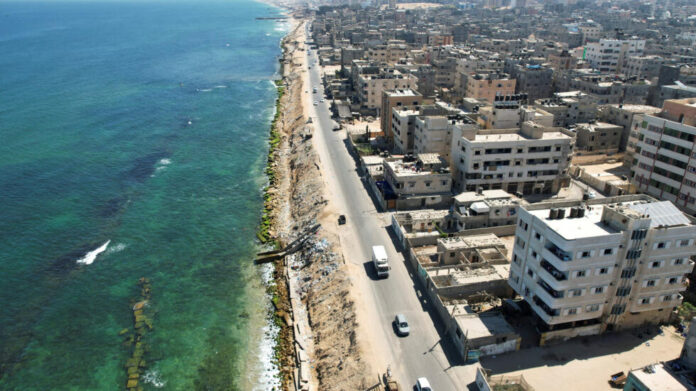Author: Rina Aulia Marcella
Affiliation: Faculty of Humanities and International Relation at President University (Indonesia)
Organization/Publisher: Aptisi Transactions on Technopreneurship (ATT)
Date/Place: March 1, 2022/ Indonesia
Type of Literature: Analysis
Number of Pages: 10
Link: https://bit.ly/3homj0m
Keywords: U.S. Foreign Policy, Israel-Palestinian, Foreign aid, and Implementations
Brief:
The article assesses the US foreign policy towards Gaza, and in a broader sense its foreign policy towards both Palestine and Israel. The author notes that the US system is one that is economic and based on corporate interests that emphasizes removing obstacles in the path of growth. In that context, the Palestinian-Israel conflict remains an obstacle to US interests in the Middle East. The author notes that the US’ support for Israel has been treated as a historic duty and played an important role in the survival of the state, noting that both sides have common principles and economic interests. She then outlines some of the key points and issues on the trajectory of the peace process, noting that Gaza remains a thorny topic for the US. In the Literature Review, the author outlines the US’s formulated positions on Israel and Palestine at different milestones, most notably the Roosevelt administration and the Obama administration. The Data Measurement portions give a summary of the main points of conflict and include: borders, security, refugees, mutual recognition, end of conflict, and Jerusalem. The article then outlines the US’s position on a potential Palestinian state, Jerusalem, and Israel. As for Findings and Discussion, a statistical analysis of US-aid towards the Palestinians and Israelis is provided. The US has granted $5 billion to Palestine since 1944; in contrast, Israel has gotten $146 billion from the US, most of which has been in the form of military assistance, as opposed to humanitarian and infrastructure assistance in the case of the PA. According to a 2016 memorandum of understanding, the US will provide Israel with approximately $4 billion each year, including $500 million for missile defense. Further, the article outlines the US support for Israel as regards migration and refugee assistance. The author concludes that US policy has failed to bring about meaningful change in Gaza. She proposes that an approach that focuses on both the political reunification of the Palestinian community and the long-term stabilization of Gaza, stressing that a more active role should be taken in Gaza, as well as with other foreign stakeholders, for Israeli and Palestinians to end the ongoing disaster.
Critical Commentary:
The article seems to adopt the narrative of the liberal order that has demonstratively favored Israel. The main problem lies in the fact that the article fails to challenge any of its claims, taking it as face value. For instance, the article describes Hamas as “It [Hamas] usually targets Israeli civilians with suicide bombers and missile attacks.” While completely dismissing the disproportionate and brutal use of force by Israel against Palestinian civilians through its far more advanced arsenal of weapons. In that, the article’s reductive narrative presents a deeply flawed version of reality, even though it illustrates how the US has heavily favored Israel when talking about aid. Additionally, the article contains some factual errors and not-up-to-date data. For instance, the article says that the US has long retained its embassy in Tel Aviv, even though a US decision has long been adopted to move the embassy to Jerusalem, and was implemented by President Trump in 2017. From an academic perspective, the article is incoherent with many missing links. Even though the title, for example, mentions the US’s policy towards Gaza, it rarely mentions Gaza, and instead addresses a cluster of matters in a way that does not demonstrate any tangible relevancy.
By: Ruby Clayton, CIGA Research Associate




